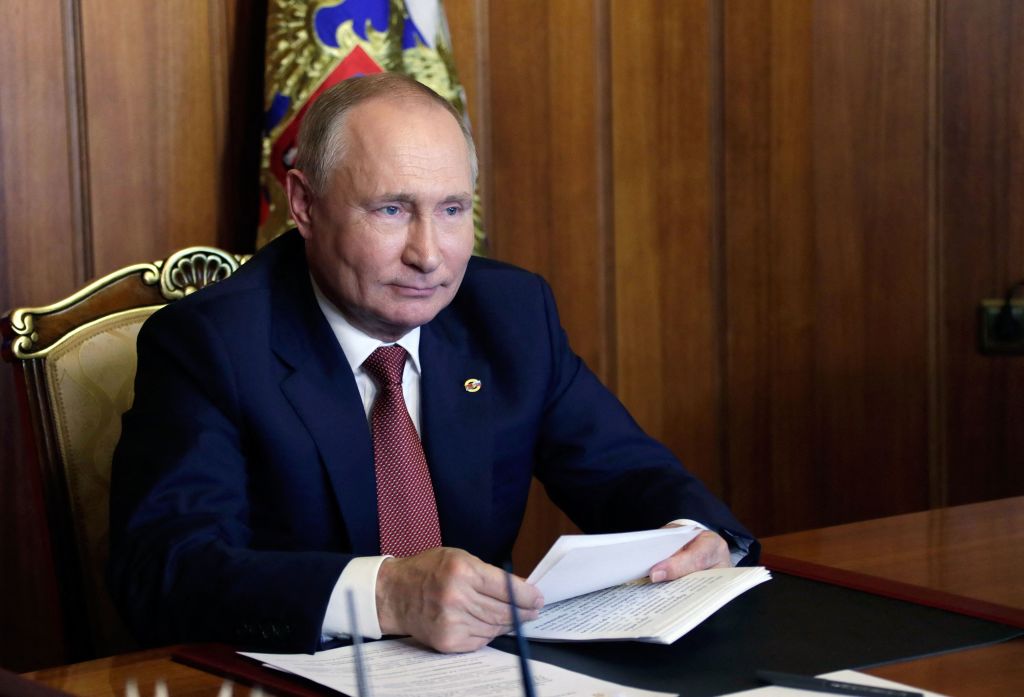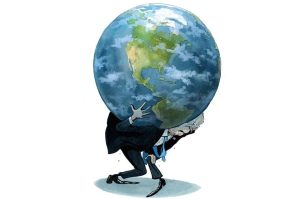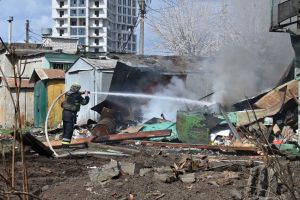Russian President Vladimir Putin is once again making the West nervous. And unlike his previous display of military might near the border with Ukraine last spring, Washington is concerned enough that it’s sent CIA director (and former US ambassador to Russia) William Burns to Moscow for talks earlier this month.
If Burns’s trip was meant to scare the Kremlin into halting additional military formations near the Russia-Ukraine border, then the confab didn’t work as planned. The Ukrainian government estimates that up to 100,000 Russian forces are now camped out in the area. American and European officials are sharing information with one another about various scenarios the Russians could be contemplating, the most dramatic being a second invasion of Ukraine in seven years.
French, German and NATO officials are warning the Russian government of severe consequences if it indeed orders another incursion into Eastern Ukraine. In an attempt to deter such an action, the Biden administration is telegraphing additional sanctions on the Russian economy and more military aid to Kiev.
Despite an $84 billion intelligence budget, Washington doesn’t have a clue what Putin is really up to. Having been a former intelligence officer himself, Putin is well-versed in spy tradecraft and in recent years has destroyed the network of human sources the US relied on in the past.
There are a number of explanations as to why the Russian military is diverting men and hardware closer to Ukraine. Just last month, US defense secretary Lloyd Austin traveled to Kiev to meet with Ukrainian defense officials and reminded folks about Ukraine’s aspirations to become a NATO member — a red-line for Russia. Moscow remains extremely frustrated with what it perceives as Ukraine’s attempts to stonewall conflict-ending negotiations over the Donbas, particularly Kiev’s refusal to grant the region a degree of autonomy. Conceivably, the saber-rattling could be a way for Putin to send a message to the Ukrainians that Moscow’s patience is not unlimited.
In the end, this is all guesswork. The simple fact is that none of us know what the Russians are up to, what (if anything) they hope to achieve with this months-long deployment, or what the end game is. What should be clear by now, however, is that the US wandering further into this conflict will do the Ukrainians no favors. The very least Washington can do is to refrain from making the situation worse by throwing more weapons at the problem, especially when the Russians have demonstrated their commitment to ending the dispute on their own terms.
While this might be difficult for Washington to hear, the political positioning of Ukraine is far more vital to Russia than it is to the US. There is a reason why Moscow responded to the 2014 ousting of Viktor Yanukovych with a stealth annexation of Crimea and a hybrid war in Ukraine’s east — the Russian leadership was absolutely petrified of watching yet another former Soviet state get swept under the NATO umbrella.
The Russians are intense sticklers for retaining dominance or at least maximum flexibility in their neighborhood. Having a crown jewel of the former Soviet Union absorbed into western security institutions would be, needless to say, the exact opposite of what Putin or any Russian president would tolerate. Preventing such a scenario remains a core objective of Russian foreign policy, one the US simply can’t wish away.
Here’s another fact the US can’t ignore: Russia retains escalation dominance in Ukraine. Since 2014, three separate US administrations have gifted Kiev $2.5 billion in military support, including anti-tank Javelin missiles that can take out Russian armor in the field. Unfortunately, Moscow has responded to the arms shipments at every opportunity, sending more aid to its proxies and thereby cancelling out whatever advantage Washington had hoped to give the Ukrainian government. More military aid to the Ukrainians wouldn’t alter this dynamic. As my Defense Priorities colleague Sascha Glaeser writes in a new paper, American policy could fuel an escalation of a conflict that has already resulted in the deaths of at least 14,000 people.
If the US genuinely cares about Ukraine, it would sit them down and deliver the cold, hard truth: in a conventional war between Russia and Ukraine, the Ukrainians will lose every single time. While the Ukrainian army is more professional than it was during the basket-case years of 2014 and 2015, it isn’t large enough, equipped enough, or resourceful enough to defeat Russia, which spends ten times what Kiev does on defense. No amount of US arms, ammunition, anti-tank missiles, or counter-artillery radar will change this.
By virtue of its geography, Ukraine has been dealt a bad hand. For Kiev, the best option is to resurrect a stalled diplomatic process with the Russians and stop dreaming that it will be adopted into the NATO family.
If this sounds brash, too bad. International politics isn’t a game of patty-cake.


















